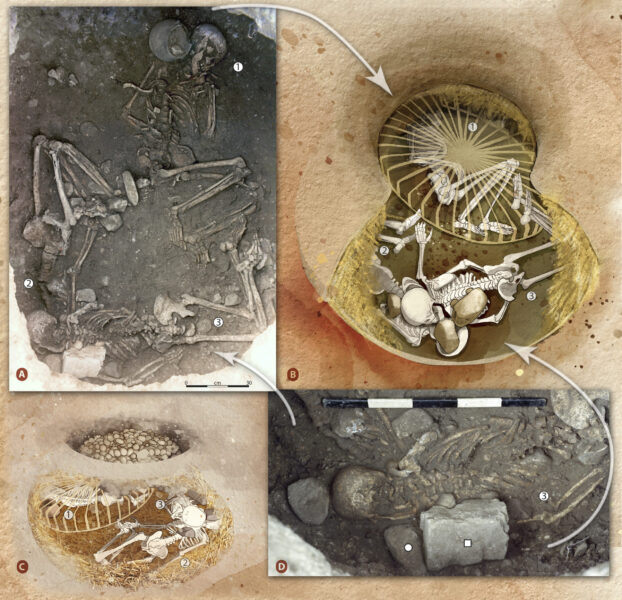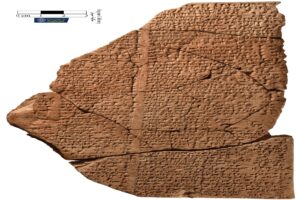Archaeologists have discovered the remains of several ritual Stone Age murders across Europe.
Although the victims were in different locations and their murders spanned at least 2,000 years, all died in the same strange way. Their necks were tied to their legs, which were bent behind their back. Known as incaprettamento, the victims would have strangled themselves because of the position they were tied in.
The new study is based around a tomb at Saint-Paul-Trois-Châteaux in southern France. Anthropologist Eric Crubezy discovered the tomb, containing the remains of three women, two decades ago.
Their burial positions baffled Crubezy for years. Eventually, he stumbled across an article about the Italian Mafia. It mentioned a killing method they used to make an example of someone. The victim lay on their front, and their legs were bent behind them and tied to their neck — incaprettamento.
Crubezy immediately thought of the bizarre tomb he had discovered years earlier and reopened the study. Reexamining their burial positions, Crubezy and his team now believe that at least two of the women were deliberately murdered.
Buried alive
The remains date back 5,400 years. Both women were tied in the same incaprettamento position and held in place with heavy stones. It led the researchers to believe that the sacrificial ritual involved burying the women alive.
There are connections between the tomb and the grain pits from the time: The researchers discovered stones for grinding grain near the tomb. Because of this, the new study suggests the ritual may have been linked to agriculture and fertility.

A and D are photos of the tomb, B and C are reconstructions of the burial. Photo: Ludes et al, 2024
Crubezy and his colleagues then scoured papers about other unusual burials from the Neolithic Era across Europe. Eventually, they found evidence of 20 sacrificial murders across 14 different sites. All date between 3500 BC and 5400 BC, and all involve incaprettamento.
“This special torture was a common practice at all these sites,” Crubezy told Science magazine.
Indirect murder?
Why this method was used is a mystery. Some think it is because it does not involve one person explicitly murdering the other. In the end, the victims strangle themselves.
However, the archaeologists caution that the bones do not show whether the victims were alive or dead when they were buried. Bones can reveal only so much; no one will ever truly know what happened during these rituals.
The oldest site was in the Czech Republic, and the youngest was the one at Saint-Paul-Trois-Châteaux. The practice lasted at least two thousand years, as far back as 5400 BC.
One study suggests that it is even older than that. In Sicily’s Addaura Cave, engravings show humans tied in the incaprettamento position. The images, from the much earlier Mesolithic Era, date between 14000 BC and 11000 BC.






